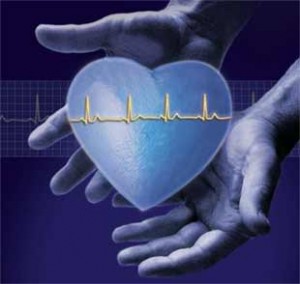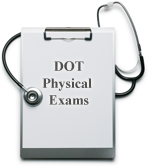 Stroke is brain damage caused by a blocked blood vessel or bleeding in the brain. The signs of a stroke may include weakness, numbness, blurred vision, confusion, and slurred speech. Getting to a hospital quickly is vital for a good outcome with a stroke.
Stroke is brain damage caused by a blocked blood vessel or bleeding in the brain. The signs of a stroke may include weakness, numbness, blurred vision, confusion, and slurred speech. Getting to a hospital quickly is vital for a good outcome with a stroke.
Category: Wellness
Health Consequences of Overweight and Obesity
 Research has shown that as weight increases to reach the levels referred to as “overweight” and “obesity,”* the risks for the following conditions also increases:
Research has shown that as weight increases to reach the levels referred to as “overweight” and “obesity,”* the risks for the following conditions also increases:
- Coronary heart disease
- Type 2 diabetes
- Cancers (endometrial, breast, and colon)
- Hypertension (high blood pressure)
- Dyslipidemia (for example, high total cholesterol or high levels of triglycerides)
- Stroke
- Liver and Gallbladder disease
- Sleep apnea and respiratory problems
- Osteoarthritis (a degeneration of cartilage and its underlying bone within a joint)
- Gynecological problems (abnormal menses, infertility)
*Overweight is defined as a body mass index (BMI) of 25 or higher; obesity is defined as a BMI of 30 or higher. For more, see Defining Obesity.
via Obesity and Overweight for Professionals: Adult: Causes – DNPAO – CDC.
Job Stress and Health
![stress-management-for-kids[1]](http://www.riskmanagement365.com/wp-content/uploads/2012/09/stress-management-for-kids1.jpg?w=100) Stress sets off an alarm in the brain, which responds by preparing the body for defensive action. The nervous system is aroused and hormones are released to sharpen the senses, quicken the pulse, deepen respiration, and tense the muscles. This response (sometimes called the fight or flight response) is important because it helps us defend against threatening situations. The response is preprogrammed biologically. Everyone responds in much the same way, regardless of whether the stressful situation is at work or home.
Stress sets off an alarm in the brain, which responds by preparing the body for defensive action. The nervous system is aroused and hormones are released to sharpen the senses, quicken the pulse, deepen respiration, and tense the muscles. This response (sometimes called the fight or flight response) is important because it helps us defend against threatening situations. The response is preprogrammed biologically. Everyone responds in much the same way, regardless of whether the stressful situation is at work or home.
Short-lived or infrequent episodes of stress pose little risk. But when stressful situations go unresolved, the body is kept in a constant state of activation, which increases the rate of wear and tear to biological systems. Ultimately, fatigue or damage results, and the ability of the body to repair and defend itself can become seriously compromised. As a result, the risk of injury or disease escalates.
In the past 20 years, many studies have looked at the relationship between job stress and a variety of ailments. Mood and sleep disturbances, upset stomach and headache, and disturbed relationships with family and friends are examples of stress-related problems that are quick to develop and are commonly seen in these studies. These early signs of job stress are usually easy to recognize. But the effects of job stress on chronic diseases are more difficult to see because chronic diseases take a long time to develop and can be influenced by many factors other than stress. Nonetheless, evidence is rapidly accumulating to suggest that stress plays an important role in several types of chronic health problems-especially cardiovascular disease, musculoskeletal disorders, and psychological disorders.
Health care expenditures are nearly 50% greater for workers who report high levels of stress.
-Journal of Occupational and Environmental Medicine
via CDC – NIOSH Publications and Products – STRESS…At Work (99-101).
Famous Tobacco Victims – John Candy
 Actor John Candy struggled with his weight and tobacco habit for most of his adult life. At 6 feet, 2 inches and approximately 300 pounds, cigarette smoking put additional stress on his heart.
Actor John Candy struggled with his weight and tobacco habit for most of his adult life. At 6 feet, 2 inches and approximately 300 pounds, cigarette smoking put additional stress on his heart.
In an effort to improve his health, Candy quit smoking a few months before his death. But it was not enough to prevent the heart attack that took him in his sleep after midnight on March 4, 1994. He was just 43 years old.
Heart Disease Risk Factors You Can Control
 High cholesterol and high blood pressure are major risk factors for heart disease. Being overweight, obese, or physically inactive all increase your risk. So does diabetes, especially if your glucose levels are not well controlled. Discuss your risks with your doctor and develop a strategy for managing them. There are many steps you can take to protect your heart.
High cholesterol and high blood pressure are major risk factors for heart disease. Being overweight, obese, or physically inactive all increase your risk. So does diabetes, especially if your glucose levels are not well controlled. Discuss your risks with your doctor and develop a strategy for managing them. There are many steps you can take to protect your heart.
via Heart Disease Pictures Slideshow: A Visual Guide to Heart Disease on MedicineNet.com.
What is the National Registry of Certified Medical Examiners (National Registry)?
 The National Registry of Certified Medical Examiners (National Registry) is a Federal program that establishes requirements for healthcare professionals who perform physical qualification examinations for truck and bus drivers. To become a certified medical examiner (ME) and be listed on the National Registry, healthcare professionals must complete training and testing on the Federal Motor Carrier Safety Administration’s (FMCSA) physical qualifications standards and guidelines. The National Registry website is accessible to carriers, drivers, enforcement officials, and the general public.
The National Registry of Certified Medical Examiners (National Registry) is a Federal program that establishes requirements for healthcare professionals who perform physical qualification examinations for truck and bus drivers. To become a certified medical examiner (ME) and be listed on the National Registry, healthcare professionals must complete training and testing on the Federal Motor Carrier Safety Administration’s (FMCSA) physical qualifications standards and guidelines. The National Registry website is accessible to carriers, drivers, enforcement officials, and the general public.
All healthcare professionals whose scope of practice authorizes them to perform physical examinations, as defined by the State in which they practice,and who intend to perform physical examinations and issue medical certificates for commercial motor vehicle (CMV) drivers to meet the requirements of Section 391.41 of the Federal Motor Carrier Safety Regulations (FMCSRs) must be certified and listed on FMCSA’s National Registry by May 21, 2014.
Famous Tobacco Victims – George Harrison
What Is Total Worker Health?
![]() Total Worker Health™ is a strategy integrating occupational safety and health protection with health promotion to prevent worker injury and illness and to advance health and well-being.
Total Worker Health™ is a strategy integrating occupational safety and health protection with health promotion to prevent worker injury and illness and to advance health and well-being.
The protection, preservation, and improvement of the health and well-being of all people who work are goals shared by workers, their families, and employers. Today, more than ever, there is increasing evidence that the work environment and the overall health, safety and well-being of the workers within it are strongly connected. Diminished health and injury, whether caused by work or resulting from non-work activities, reduces quality of life, opportunity, and income for workers and those dependent upon them. Conversely, workplaces with low risk of injury and enhanced opportunities for the total health of workers can lead to a vibrant, engaged and highly performing workforce.
via CDC – Total Worker Health What Is Total Worker Health? – NIOSH Workplace Safety and Health Program.
World’s oldest woman celebrates her sweet 116th birthday
 Besse Cooper celebrates her 116th birthday in Monroe, Ga., on Aug. 26, 2012.
Besse Cooper celebrates her 116th birthday in Monroe, Ga., on Aug. 26, 2012.
Her secrets? “I mind my own business. And I don’t eat junk food.”
via World’s oldest woman celebrates her sweet 116th birthday – Good News – TODAY.com.
Heart Attack Symptoms and Early Warning Signs
 Knowing the early warning signs of heart attack is critical for prompt recognition and treatment. Many heart attacks start slowly, unlike the dramatic portrayal often seen in the movies. A person experiencing a heart attack may not even be sure of what is happening. Heart attack symptoms vary among individuals, and even a person who has had a previous heart attack may have different symptoms in a subsequent heart attack. Although chest pain or pressure is the most common symptom of a heart attack, heart attack victims may experience a diversity of symptoms that include:
Knowing the early warning signs of heart attack is critical for prompt recognition and treatment. Many heart attacks start slowly, unlike the dramatic portrayal often seen in the movies. A person experiencing a heart attack may not even be sure of what is happening. Heart attack symptoms vary among individuals, and even a person who has had a previous heart attack may have different symptoms in a subsequent heart attack. Although chest pain or pressure is the most common symptom of a heart attack, heart attack victims may experience a diversity of symptoms that include:
- pain, fullness, and/or squeezing sensation of the chest;
- jaw pain, toothache, headache;
- shortness of breath;
- nausea, vomiting, and/or general epigastric (upper middle abdomen) discomfort;
- sweating;
- heartburn and/or indigestion;
- arm pain (more commonly the left arm, but may be either arm);
- upper back pain;
- general malaise (vague feeling of illness); and
- no symptoms (approximately one quarter of all heart attacks are silent, without chest pain or new symptoms and silent heart attacks are especially common among patients with diabetes mellitus).
via Heart Attack Symptoms and Early Warning Signs – MedicineNet.

